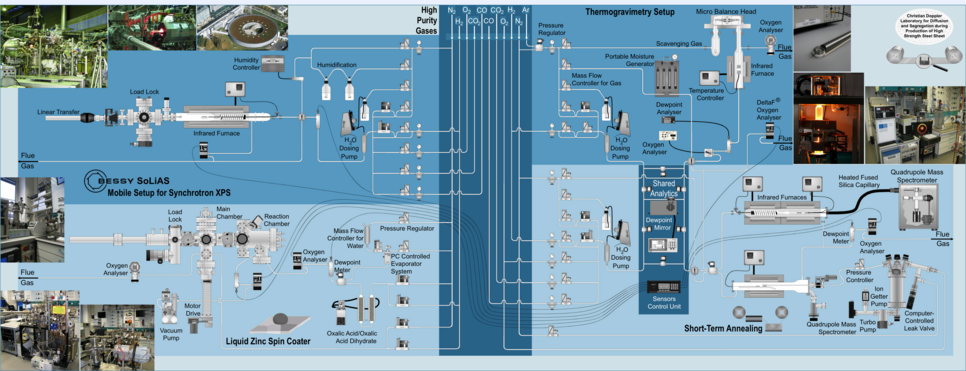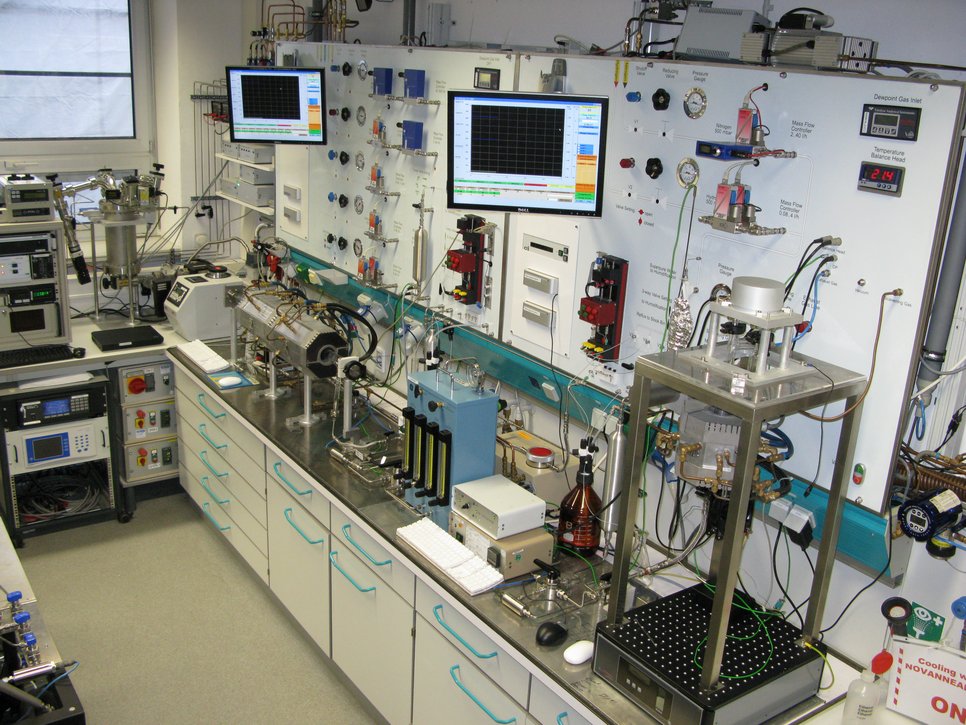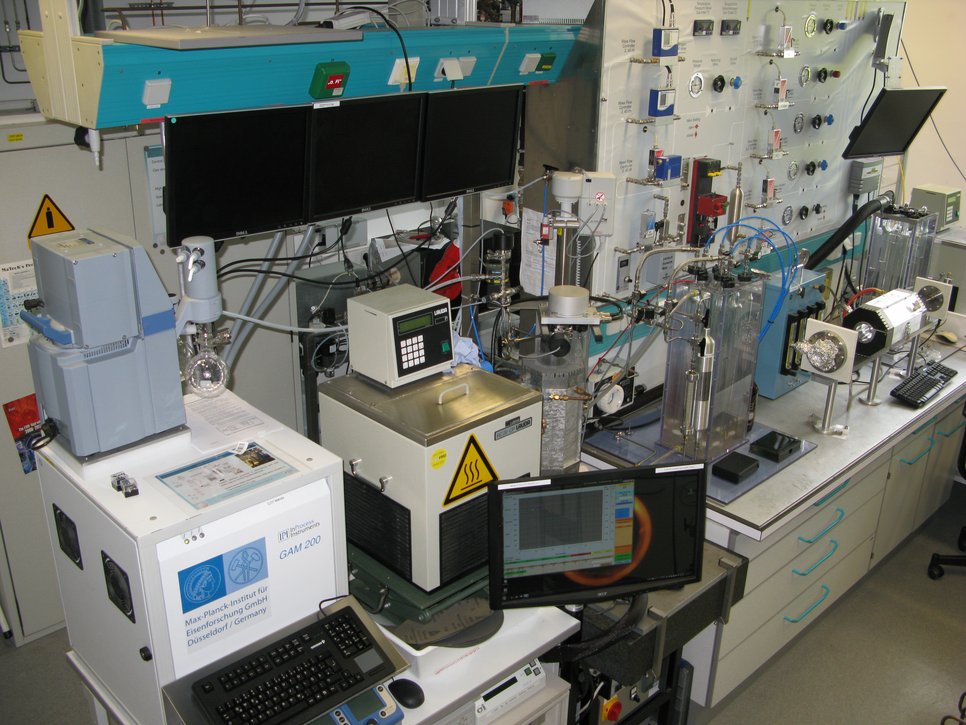Short-Term Annealing Setup
With this unique combination of two powerful IR furnaces, which allow fastest heating and cooling rates, and a high precision dosing and conditioning system for ultra pure gases and water, industrial short-term annealing processes can be simulated and important parameters like dew point, water/hydrogen or carbon dioxide/carbon monoxide ratio or oxygen leakages during process can be diversified. With a micro dosing pump the forming gas can be moisturized with a wide range of dew point from -80 °C to +75 °C (vacuum conditions), in order to achieve a defined oxygen partial pressure at the sample surface, which leads to a selective oxidation of the selected substrate elements.







